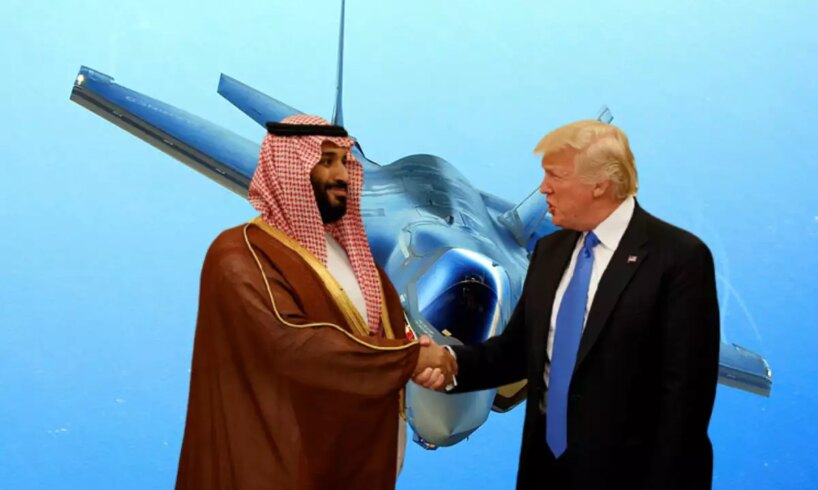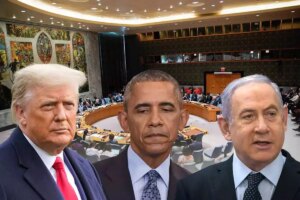
Since the early 1990s, the United States committed to ensuring Israel’s qualitative military edge in the Middle East. That principle, formulated during the Clinton administration and reaffirmed over the years by both Republican and Democratic governments, served as an unwritten red line: Israel would receive more advanced, more precise, and earlier systems than any Arab country, even if that country was considered “friendly”.
This week, that red line may face its biggest test in decades, with Saudi Crown Prince Mohammed bin Salman’s planned visit to Washington and the expected US approval for the F-35 deal to the kingdom.
The Americans always viewed the Saudis as an important strategic partner, but the idea of supplying the stealth fighter – the only fifth-generation jet operated by any country in the Middle East (Israel) – was seen until recently as a line best not crossed. The reason is simple: the F-35 is no longer just a fighter jet. It is an intelligence, strike, and electronic platform that enables penetration into spaces that were previously impassable, and it is a source of security, diplomatic, and strategic power not only in the local arena but also in the broader regional balance of power.
The stealth fighter entered Israeli Air Force service as a result of a long, complex, and sometimes politically sensitive process. Although the F-35 was born as a large-scale international project led by the United States called JSF – Joint Strike Fighter, Israel was not included in the first group of countries that participated in it.
F-35 aircraft fly in Israeli airspace (IDF Spokesperson’s Unit)
The main reason was that the Americans carefully examined the combination of industrial partnership and security sensitivity: Israel was not a producer in NATO frameworks, and it was known as a country that makes deep modifications to almost every air platform it acquires. From Washington’s perspective, there was a need to carefully examine whether Israel’s modification requirements would not endanger particularly sensitive technological components. Only at a later stage, after a prolonged process of secret coordinations and technological protection mechanisms, did Israel join as a special procurement partner and not as a full member in the JSF coalition.
The US president who essentially approved the sale of the stealth fighters to Israel was George W. Bush. His administration made the principled decision to allow Israel to acquire a fifth-generation jet, out of the understanding that the rise in regional threats – including Iran – requires Israel to have a significant qualitative advantage. The actual agreement was signed during the Obama administration, which continued this policy and gave the green light to the first order. Israel was indeed outside the circle of countries that contributed to the development of the tool, but it became the first customer in the world to receive Washington’s approval for deep Israeli modifications in the avionics systems, electronic warfare, and connectivity.
The first Adir landed in Israel on December 12, 2016, at Nevatim Airbase, in a ceremony that made clearer than anything the significance of this acquisition for Israel. For the first time, the Air Force received a jet capable of entering almost any point in the Middle East with little warning, generating independent intelligence, and carrying out precise strikes with a level of survivability higher than that of any other tool. It gave Israel an advantage that is not only technological but also conceptual: the Air Force moved from an era where it had to “break into” enemy airspace to an era where it can operate within it with relative ease.
“Capable of entering almost any point in the Middle East with little warning”. The Adir jet, photo: Air Force
Since 2016, three batches of jets have arrived in Israel. Today, the Israeli Adir fleet numbers about 36 F-35 jets integrated into squadrons at Nevatim. The Israeli government has already approved the purchase of another 25 jets, which will bring the operational strength to more than 60 tools. There are also discussions about further expansion later this decade, among other things to ensure a response to new threats and the replacement of some of the veteran fourth-generation jets.
The F-35 Adir (IDF Spokesperson’s Unit)
The combination of operational flexibility, stealth capability, unique Israeli electronic warfare modifications, and natural integration into national control systems created a new reality: the stealth fighter is no longer just a component in the Air Force but an overlay layer that gives Israel freedom of action that no one in the arena holds, and continues to shape Israeli combat doctrine even today.
In Israel, especially after Operation Rising Lion, the significance of this process is even clearer. In the campaign that lasted 12 days and spanned thousands of kilometers, the F-35 was the tool that changed the rules of the game. It enabled deep penetration into Iranian airspace saturated with radars, missile batteries, and electronic warfare capabilities without the need to open a route through a wave of preliminary strikes. It provided real-time intelligence, sensor fusion that creates a continuous battle picture, and surgical strike capability on targets essential to the nuclear program – and all this while maintaining almost complete stealth. Israeli pilots described how they saw Iran’s defense arrays “waking up”, if at all, only after the strike had already been completed. That was a moment that illustrated how much this tool changes reality, and how much the Israeli advantage on it is not only tactical but essential.
This is exactly where the Israeli concern lies. If Saudi Arabia indeed joins the select club that holds the American stealth fighter, the implication is not just another advanced jet in the region; it is a change in the basis of the balance of power. Not because Saudi Arabia is an enemy state, today it is seen as a potential strategic partner, but because the qualitative advantage is a resource that must be maintained over time, especially in a region where the balance of alliances can change in a few years, if not months.
Prime Minister Benjamin Netanyahu during his tour of an F-35 squadron (GPO/Ariel Hermoni)
Israel needs unique technological depth, one that cannot be closed in two or three years. And if Saudi Arabia is indeed equipped with the stealth fighter, it will be the first time an Arab country receives access to a technological generation equal to that of Israel. In the past, Saudi Arabia requested – and received AWACS and F-15 jets from the US, but Israel managed to impose certain restrictions on the Saudi jets, thereby leaving a technological advantage in its hands.
Supporters of the move argue that Israel holds an advantage of many years over any country that enters the deal now. They point to its extensive operational experience, the unique hardware and software modifications it has made, and the complementary capabilities – intelligence, communications, and logistical capability that other countries are still far from holding. The QME mechanisms (ensuring qualitative edge), they remind, do not erode in one day. But on the other hand, there are those in Israel who warn that these gaps are not a given. Technology is a dynamic matter, and from the moment the door opens, it is hard to return it to full closure.
In this reality, Mohammed bin Salman’s visit to Washington becomes a top event. The US president’s decision will not approve just a deal – it will define the contours of air supremacy in the Middle East in the coming decade. The fact that in Israel they use examples from Operation Rising Lion to gauge the significance of the stealth fighter only sharpens the tension: Israel knows very well what the F-35 allows it to do. It also knows what will happen the day these capabilities reach.





